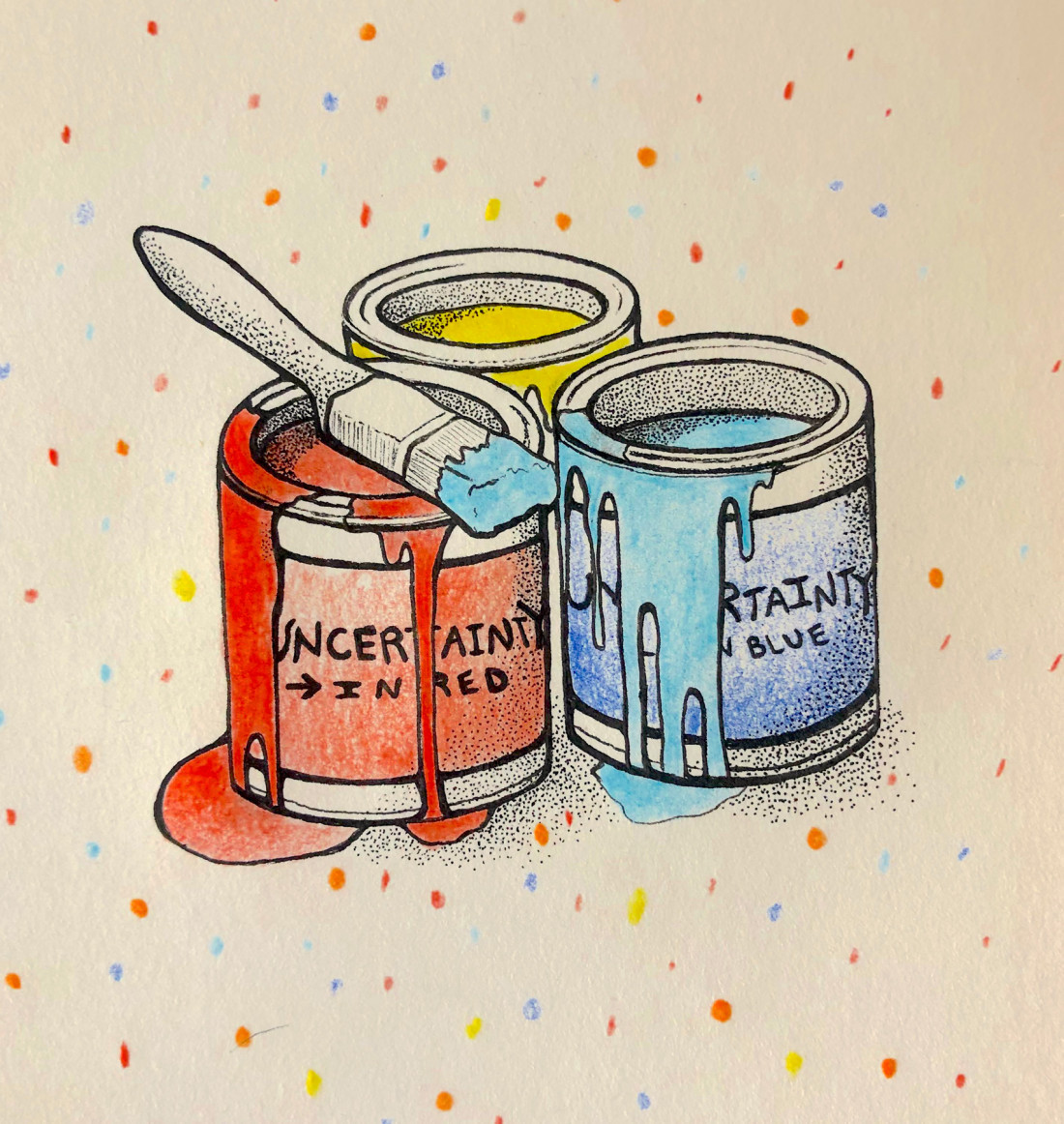Fifty shades of uncertain
Life on the Borderline

Illustration by Gabrielle Funk
The first question I asked when I started therapy was “how do I make it stop hurting?” My therapist’s frank response was “you can’t, and that’s not the point of this, anyway.”
I went home that day, stripped raw by the painful memories we dug up and feeling defeated by the realization that this pain was here to stay. I wondered if it was even worth it to keep trying to heal. I was exhausted and felt lost in the face of my newly diagnosed personality disorder.
This hopelessness and confusion in the face of mental healthcare was not unfamiliar to me. I had seen four different therapists and was hospitalized twice before I was diagnosed (improperly at first) and finally referred to a clinical psychologist. On top of that, I spent hours desperately trying to treat myself at home to save money while falling into the victim-blaming traps of “love and light” spirituality gurus.
I don’t want to undermine the value of seeing a professional therapist. It saved my life. I do, however, want to talk about the hidden costs of navigating the world of therapy. There were too many points during treatment when I was so utterly overwhelmed by the uncertainty of it all that I nearly gave up.
The biggest cost of therapy is the obvious one: the financial expense. Seeing a clinical psychologist for a year cost me about $10,000. That number doesn’t include the amount paid to previous therapists or the amount lost to time off work while I was acutely ill. Despite the help I was given (and I am immensely privileged to have had the support I did), my partner and I are still paying off our debt from that year.
Not so obvious is the cost of effort. The amount of willpower and mental stamina it takes to undergo rigorous therapy isn’t talked about enough.
Something else that is rarely discussed is the task of trying on therapists, laying one’s pain bare to see how they handle it, all in an effort to find a balance between effective treatment and minimal debt. Sifting through painful moments again and again takes a huge mental toll.
Finally, there was the cost of stigma. While being diagnosed did save my life, it cost me the ability to be taken seriously by doctors.
As I visited the emergency room every couple months with worsening abdominal pain, I watched doctors look at my file and tell me that I just needed to take a sedative and calm down, that the pain was all in my head. I did eventually get surgery to effectively treat the disease, but the damage of being repeatedly dismissed and treated like a hysterical female was already done.
All things considered, I can now see that the point of therapy was indeed not to get rid of the pain. That being said, we need to make damn sure that the process of managing the pain doesn’t leave people in a worse condition than when they started.
Hannah Magnusson is a master’s student in the arts department at Athabasca University. Her research focuses on the intersection of storytelling and advocacy, studying how fostering empathy between different perspectives can build a bridge to understanding and action. She lives on Treaty 1 territory on the shore of Lake Winnipeg.
Published in Volume 75, Number 13 of The Uniter (January 7, 2021)






